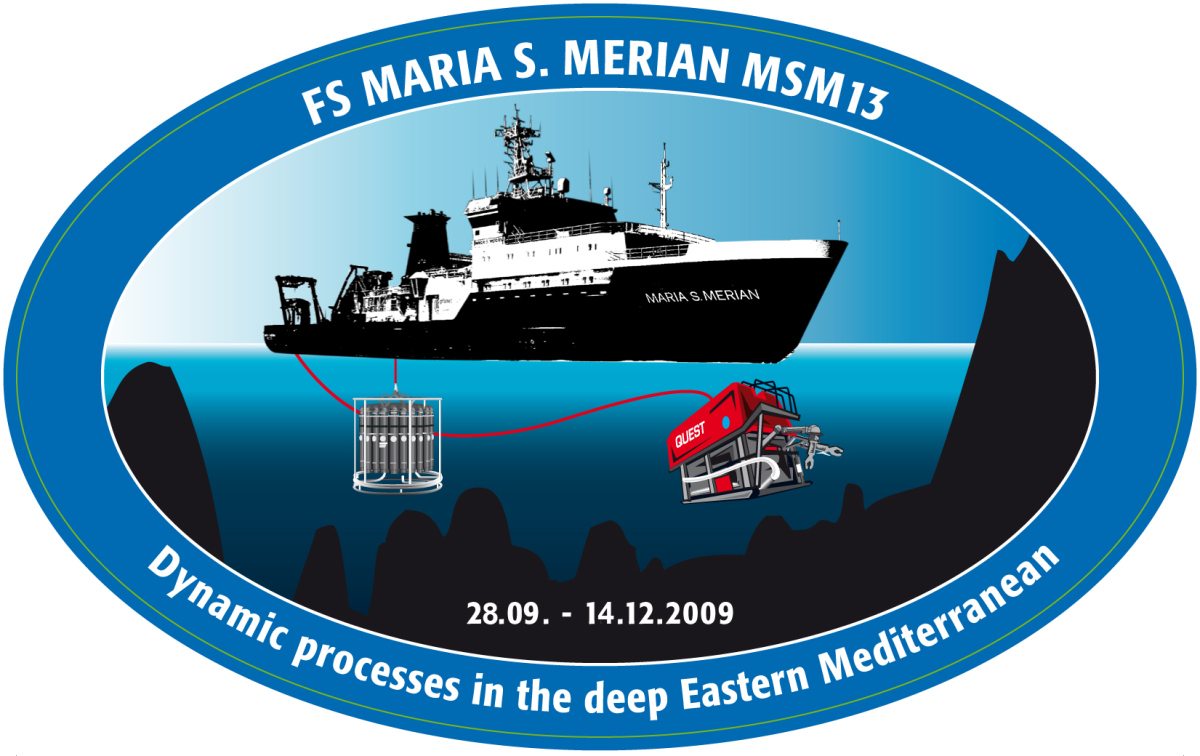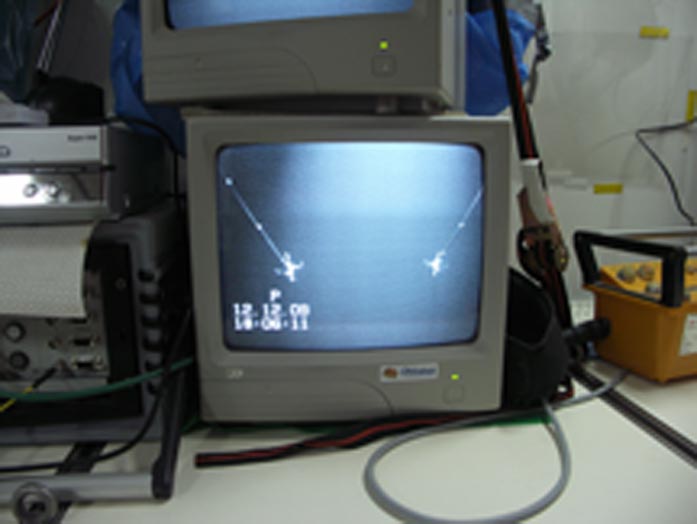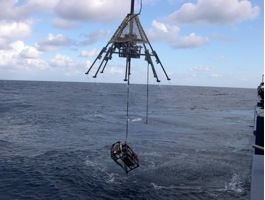Seitenpfad:
Weblog 12
Chief scientist leg 4
Frank Wenzhoefer
f.wenzhoefer.d at
merian.briese-research.de
Frank Wenzhoefer
f.wenzhoefer.d at
merian.briese-research.de
Weblog 12
06. – 11.12.2009
How to use a TV-MUC
December 6 started with a nice surprise, Santa Claus visited also Merian and placed some presents in front of our cabins. Unfortunately the weather was still bad and the sea state to rough to start another AUV dive. Thus we use the remaining time before we had to return our Turkish observer with a Parasound transect on Kazan mud volcano. The aim was to map gas flares at another site within the Anaximander area. After this transect our work in the Anaximander area was finished and we started our transit to Limassol .
06. – 11.12.2009
How to use a TV-MUC
December 6 started with a nice surprise, Santa Claus visited also Merian and placed some presents in front of our cabins. Unfortunately the weather was still bad and the sea state to rough to start another AUV dive. Thus we use the remaining time before we had to return our Turkish observer with a Parasound transect on Kazan mud volcano. The aim was to map gas flares at another site within the Anaximander area. After this transect our work in the Anaximander area was finished and we started our transit to Limassol .

In the evening we meet the Turkish coast guard boat and with some difficulties because of the bad weather we managed to get our Turkish observer Burak Evren Inanan to the coast guard boat. After approx 12 hour of transit we then reached Limassol where our college Gero Wetzel (Ifm-Geomar) left us. The heat lance program was finished and Gero returns with a lot of temperature profiles. Our anchorage in Limassol was also used to receive spare parts for the ROV. Due to the stormy weather at the working site in front of the Nile deep sea fan and the repair work at Quest we decided to extent our anchorage a bit to take advantage of the cam conditions.

Fig.2 Taking the spare parts on board (Source: P. Wintersteller)
After reaching our working area at the Pockmark site our next ROV dive was dedicated to recover several colonization experiments and sediment samples from chemosynthetic ecosystems. Unfortunately we had to abort the dive due to a failure in the ROV electronic and some malfunctions of the manipulator in the middle of our working program. Some of the required sediment samples were then sampled by TV-MUC. The navigation of the ship even with an instrument hanging at almost 2000m water depth was that precise that we were able to hit even small mat patches of a few meters.
After reaching our working area at the Pockmark site our next ROV dive was dedicated to recover several colonization experiments and sediment samples from chemosynthetic ecosystems. Unfortunately we had to abort the dive due to a failure in the ROV electronic and some malfunctions of the manipulator in the middle of our working program. Some of the required sediment samples were then sampled by TV-MUC. The navigation of the ship even with an instrument hanging at almost 2000m water depth was that precise that we were able to hit even small mat patches of a few meters.
Fig. 3 Retrieval of nice sediment cores collected with the TV-MUC (Source: P. Wintersteller)
On December 10 the AUV-team started another successful mission. The AUV B-Seal mapped ca. 22km of the Pockmark area; main focus was to map the areal distribution of carbonate crusts. In combination with our gas flare mapping this might lead to a correlation of crusts and gas emissions. In the evening ROV Quest was ready again for its next dive and we continued our sampling program from the previous dive. Unfortunately the dive had to be aborted shortly before packing all instruments and boxes into the lift.
During the night Miriam Römer mapped another area in the central pockmark for gas flares. December 11 was then entirely used to sample different chemosynthetic ecosystems with the TV-MUC. The precise positioning of ship allowed retrieving samples from four habitats. Since the positioning was that excellent we decided to recover our benthic chamber with the TV-MUC. Adding some hooks below the MUC frame allowed us to fish the instrument from 1600m water depth. Unfortunately this procedure was not applicable for the recovery of our bio-boxes and Homer- beacons which still stay at the seafloor.
On December 10 the AUV-team started another successful mission. The AUV B-Seal mapped ca. 22km of the Pockmark area; main focus was to map the areal distribution of carbonate crusts. In combination with our gas flare mapping this might lead to a correlation of crusts and gas emissions. In the evening ROV Quest was ready again for its next dive and we continued our sampling program from the previous dive. Unfortunately the dive had to be aborted shortly before packing all instruments and boxes into the lift.
During the night Miriam Römer mapped another area in the central pockmark for gas flares. December 11 was then entirely used to sample different chemosynthetic ecosystems with the TV-MUC. The precise positioning of ship allowed retrieving samples from four habitats. Since the positioning was that excellent we decided to recover our benthic chamber with the TV-MUC. Adding some hooks below the MUC frame allowed us to fish the instrument from 1600m water depth. Unfortunately this procedure was not applicable for the recovery of our bio-boxes and Homer- beacons which still stay at the seafloor.
Fig 4a Two hooks for fishing the benthic chamber mounted below the TV-MUC (Source: P. Wintersteller)
Fig 4b: Recovery of the benthic chamber with the TV-MUC (Source: F. Wenzhöfer)
Until the morning of our last working day we hopped to get another with the ROV but the weather situation did not improve. After several hours of hart work the ROV-team managed to get Quest to work again. However, strong winds and rough sea prohibited a last dive. Thus we decided to release our empty lift.
After 3 weeks at sea and for some of us even 7 weeks we are steaming back to Limassol.
Best greeting from all on board and we wish everyone a Merry Christmas and a Happy New Year.
Frank Wenzhöfer
Until the morning of our last working day we hopped to get another with the ROV but the weather situation did not improve. After several hours of hart work the ROV-team managed to get Quest to work again. However, strong winds and rough sea prohibited a last dive. Thus we decided to release our empty lift.
After 3 weeks at sea and for some of us even 7 weeks we are steaming back to Limassol.
Best greeting from all on board and we wish everyone a Merry Christmas and a Happy New Year.
Frank Wenzhöfer




